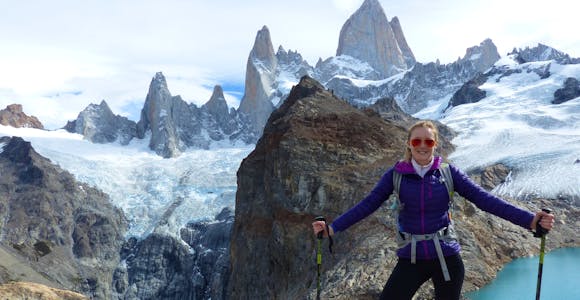
What to do in Patagonia
The glacier fields, mountains, forests, lakes and fjords of Patagonia make for a vast playground for a range of different adventure activities. Try your hand at something new...
Discover MoreDeep roots in Patagonia: We are ex-guides, tour leaders, outdoor enthusiasts, & adventurers.
We’ve got our feet on the ground: Impartial advice, a bespoke service, and at no extra cost.
For the ends of the Earth: Sustainability is more than our carbon footprint (but we’re reducing that too).

Patagonia is one of the world's last great wildernesses, with remote, dramatic landscapes on an almost Himalayan scale. You can pack a lot into a trip: explore volcano and canyon country in the north, hike the glaciers and peaks in Torres del Paine and sail the wild fjords of Tierra del Fuego, all in one adventure.

The remote Carretera Austral runs down the spine of Chilean Patagonia
Patagonia is the name of the region straddling both Chile and Argentina where the great cone of South America tapers down towards Cape Horn to point to Antarctica. Its spine is the Andes Mountain range, and it is bounded east and west by the Atlantic and Pacific Oceans. Its northern border is more fuzzily defined, which feels appropriate since Patagonia is often defined less by geographical or political border than as a place conjured up by the imagination.
This is a land of epic landscapes. Endless steppes dotted with estancias (ranches) where gauchos still maintain their traditional lifestyle before erupting into craggy mountain ranges carved through by one of the largest ice fields on earth. Temperate rainforests with trees a thousand years old tell stories of the land's first inhabitants, before tailing into glacial fjords where you can watch blue whales on their migration. There are active volcanoes capped with snow, gigantic lakes and beaches packed with penguins – all of which can be experienced in weather that can famously offer you four seasons in a single day. Patagonia, we should also point out, is home to some of the finest hiking and trekking locations in the world.
This is truly a place to get away from the crowds. There are just two million people here occupying one million km². But from the indigenous Mapuche and Yaghan people through modern explorers like Charles Darwin and Francisco Moreno to the adventurers of today, Patagonia is a place where humankind has always pushed itself beyond its comfort zone, looking for new horizons. There are few better places to immerse yourself in all that mother nature has to offer.

The glacier fields, mountains, forests, lakes and fjords of Patagonia make for a vast playground for a range of different adventure activities. Try your hand at something new...
Discover More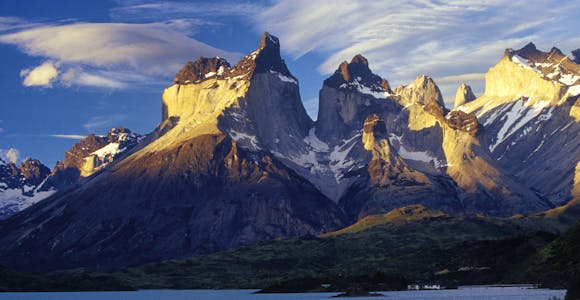
Patagonia is a vast region - spanning two different countries and over 1,000 miles north to south. You could spend years exploring the region's varied landscapes.
Discover More
If you're looking for a base from which to explore, why not consider a lodge, estancia or luxury campsite which offers excursions? Many are based in the heart of a national park, …
Discover More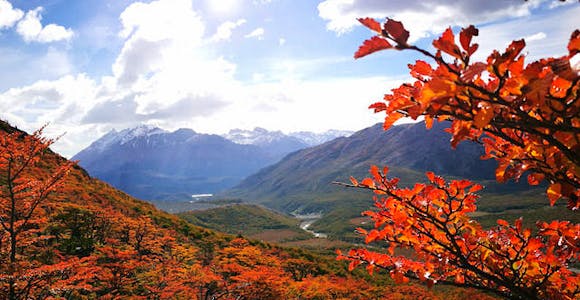
Get to know the different seasons of this diverse region, from the long days of the Patagonia summer to the first snows of winter.
Discover More
Los Glaciares National Park in Argentina
Patagonia’s landscapes are as varied as they are vast. The sculptural peaks of Torres del Paine and Los Glaciares are on everyone’s bucket list but there is so much more to see here.
The Patagonian Ice Field is one of the largest masses of ice outside the polar regions, and is easily accessible for adventure travellers, while the crystal clear glacial lakes formed millennia ago in its wake are some of the prettiest on the continent. From the lush rainforests and snow-capped volcanoes of the Lake District to the wind whipped peaks of Tierra del Fuego, there is nowhere quite like Patagonia.
The earliest visitors to Patagonia often struggled with the elemental nature of the land, but for travellers today, Patagonia also now balances remoteness with the best creature comforts. Here is somewhere you can trek for days without seeing a soul before returning to a cosy room in a luxury lodge to enjoy a refined meal accompanied by the best wines that Chile and Argentina can offer.

Kayaking in Argentina's Lake District
For many visitors, Patagonia’s great wilderness means hitting the hiking trail. It’s no coincidence that some of the world’s leading outdoor clothes brands took their inspiration from the region.
Torres Del Paine and Los Glaciares are both home to some one of the world’s great walks, but Patagonia’s many national parks offer a host of outdoor activities. You can hike to thousand year old trees, mirrored mountain lakes or across ice fields with crampons and rope, and spend as little as half a day on the trail or opt for a week long adventure sleeping in mountain huts.
Beyond this, the mountains, volcanoes, lakes and fjords make up a vast playground for adventure activities. You can jump in the saddle to go off-road, by mountain bike or horse. Fjords wait to be explored by kayak, with untrodden beaches and intimate wildlife encounters. Rivers bubble with whitewater to raft on, or slowly meander through the landscape for world-class fly-fishing.
Few places do outdoor adventure as well as Patagonia.
Puma in Torres del Paine National Park, Chile
Patagonia’s rich and diverse wildlife never disappoints, and there is no symbol that better sums up the wild freedom of the region than the mighty condor soaring effortlessly above the Andes mountains.
High on many people’s wildlife wishlists is Patagonia’s apex predator, the puma. The normally elusive pumas are found almost everywhere in Patagonia, but are most reliably seen in Torres del Paine on a walking safari guided by expert trackers. Guanacos, their llama-like prey are also common here, as are condors soaring on the thermals.
The coasts offer some of the best wildlife watching experiences. Top among them is Peninsula Valdes, where Southern Right Whales swim close to the beach, Magellanic penguins breed among the sealions and elephant seals, and orcas patrol the shore looking for lunch.
The Chilean Fjords also have tremendous whale, seal and penguin watching, and at their northern limit offer access to temperate rainforests that are a birdwatchers dream. With luck you might even see a huemul, the tiny deer that’s also found on the nation’s coat of arms.
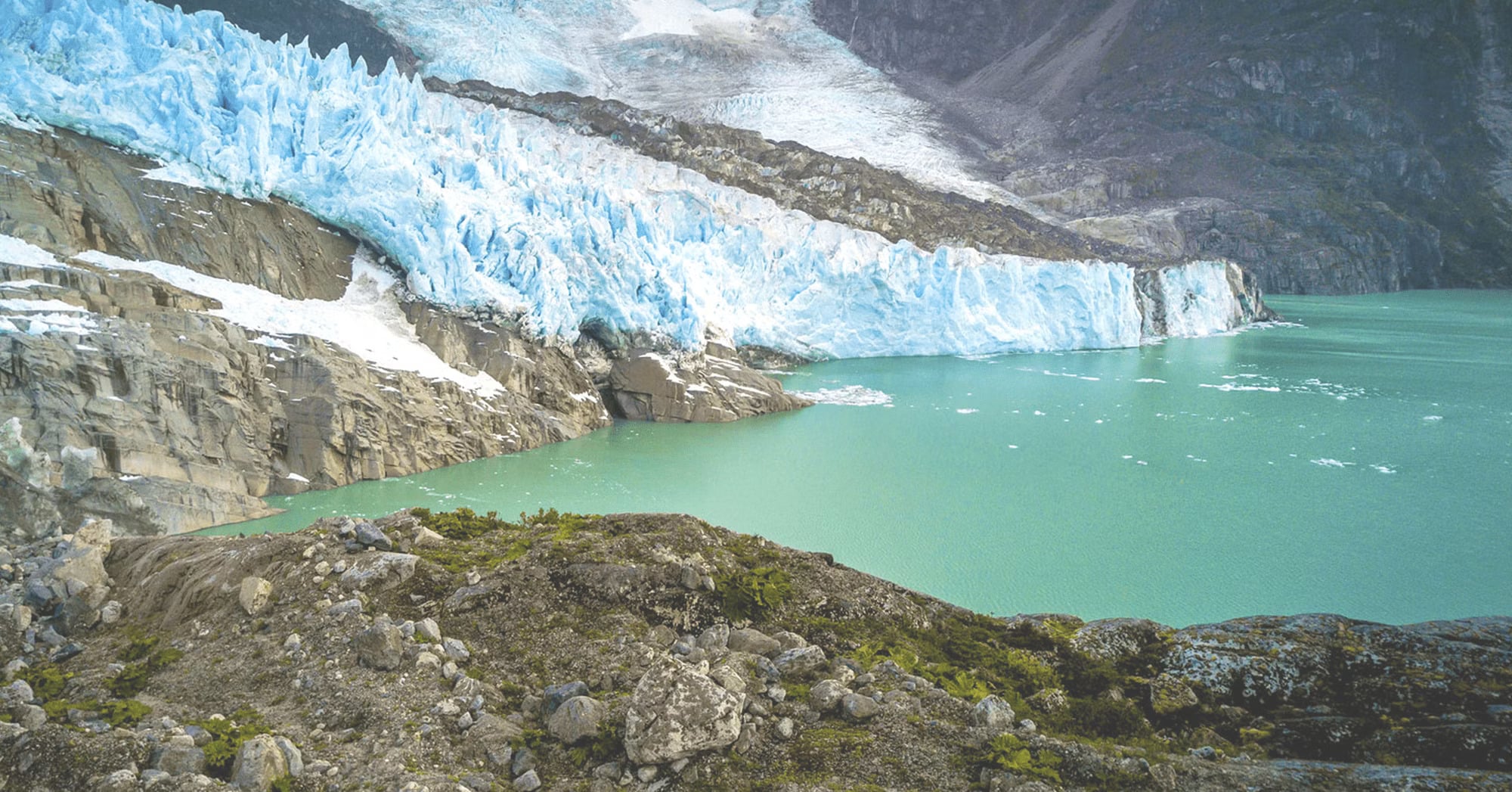
Patagonia is such an extreme place in terms of how remote you can get, the weather and the variety of landscapes to see. As a lover of the outdoors, it makes me very overexcited to explore and get to know it better. I've been so many times and yet every time there is a new area to discover and more lovely people to meet. It encompasses everything I love best.
Harriet Pike Head of Swoop Patagonia

The wilds of Tierra del Fuego
Nowhere does remote quite like Patagonia. It is one of the few places on Earth where you can be completely isolated, whether that’s cradled in the luxury of a lakeside lodge or trekking for days without seeing a soul.
While big-ticket places like Torres del Paine attract the crowds, with the right advice it's easy to get off the beaten track and have the wild landscapes to yourself even in places like Los Glaciares National Park.
In Tierra del Fuego, you can easily find yourself alone on a forest trail or paddling on an empty mountain lake when you're less than half a day away from high end accommodation.
For the truest Patagonian wilderness, follow the Carretera Austral highway from Aysen through the Route of the Parks along the spine of Chile. Many of the national parks here are wilderness in its truest sense, waiting to be discovered by the most intrepid travellers looking to get away from everything.
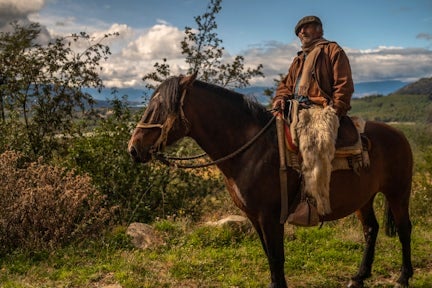
A Chilean gaucho in Aysen
From indigenous people who have made their life at the end of the world for centuries, to settlers who came in search of a better life, the people of Patagonia are proud of their homeland.
One of the most iconic symbols of Patagonia is the gaucho, or South American cowboy, although in this part of the world they mostly herd sheep rather than cattle. Nevertheless riding and camping with gauchos remains a classic experience.
Despite the region’s colonial history, many of Patagonia’s original inhabitants still stick proudly to their traditions. In the north, the Mapuche continue to guard their rights as guardians of the forests and volcanoes of the region, while in Tierra del Fuego the Yaghan people have defied the odds to hold onto their language and culture.
Other Patagonia residents can be more unexpected such as the communities of Welsh Patagonia who maintain strong cultural ties to their motherland in the British Isles. But wherever you travel to. a warm welcome awaits all visitors.

Preparing asado in an Argentinian estancia
Patagonia’s food is as diverse as its landscapes. Tierra del Fuego and the Chilean Fjords offer fantastic seafood with salmon and king crab, while the forests of Aysen are heaven for mushroom lovers.
Argentina in particular is known for its love barbequed meat. A lamb asado makes for an unforgettable meal, though vegetarians should note that delicious non-meat options are widely available.
Whatever you eat, lunch and dinner are served up with delicious local wines, while the time spend between meals is punctuated by drinking mate, that bitter herbal infusion so beloved across Patagonia.
On the island of Chiloé, culinary traditions are particularly long-held. The regional speciality is here curanto, a seafood, meat and vegetable dish baked in baked in a pit oven. The oldest curanto pits are thought to date back over 10,000 years: proof if it was ever needed that Patagonia has been serving up good food for a very long time indeed.
Feeling overwhelmed with all the Patagonia options?
Swoop Patagonia Expert Iain

There's a famous Patagonian saying, 'those who hurry waste time', and that's never more evident than when meeting a local for the first time. Welcomes are warm and genuine, people always take the time to settle into each others company with news of family and friends before getting down to business.
Luke Errington Founder, Swoop Patagonia
We are guides, guardians, and travellers with over 400,000 hours of lived experience in Patagonia.
From a world of options, we’ll help you discover your perfect trip.
We care deeply about protecting Patagonia, that’s why 1% of our revenue goes to conservation.
Our dedicated support throughout will make sure you have the experience of a lifetime.
While the mountainous and icy parts of Patagonia are its best known attractions, the region is home to an incredibly diverse vista of landscapes. Other highlights worthy of deeper exploration include:
Patagonia offers some of South America's most incredible wildlife experiences. In Torres del Paine there is the opportunity to track pumas, along with its prey, the llama-like guanaco, while condors wheel on the thermals above. The Magellan Straits, Chilean Fjords and Peninsula Valdes on the Atlantic Coast all off perfect conditions for whales and penguins, while the Lake Districts have superb birdwatching locations.
Some trips are designed specifically around these wildlife and photography opportunities, and others can include additional days to enjoy this wildlife for yourself.
Learn more about where and when to see Patagonia's wildlife.
Going wild comes in many forms in Patagonia, from a day of kayaking on a secluded lake to going fully remote on hiking across an ice field in the mountains. Whatever your definition of adventure, you can find it all in Patagonia.
For those wanting to sleep under the stars or get to the best spots to photograph a sunrise, camping is by far the most adventurous option for your trip. If you're after something more comfortable, there are plenty other options from luxury lodges to glamping in heated yurts.
The Patagonian Andes are renowned for offering some of the most dramatic hiking anywhere on this planet: the W Trek in Torres del Paine is truly one of the world's great treks. Patagonia is home to a dozen different national parks, each offers day hikes where you return to a comfortable hotel each night, and multi-day treks in the remote wilderness.
Some travellers visit Patagonia for just a four-day trek, others hike several different national parks over the course of four weeks. Learn more about trekking in Patagonia.
Patagonia has more than its fair share of 'must see' destinations. The towers of Torres del Paine will inspire awe in even the most seasoned travellers, while the Perito Moreno Glacier remains a wonderful and hypnotic spectacle no matter how many people you'll share it with.
Hitting the open road gives you the freedom to stop off where you choose while driving between some of Patagonia's finest sights. There are some epic journeys to be had on the Carretera Austral in Chile and Argentina's Ruta 40 in Argentina, though roads in the region are often unpaved and run through very remote areas, so experienced drivers will be more comfortable getting behind the wheel.
The gaucho (Patagonian cowboy) remains an important cultural touchstone to this day, and when you see Patagonia's landscapes you'll quickly understand why. Getting in touch with that culture is an important part of many people's trips.
You don’t need to be an experienced rider to enjoy a day or two of exhilarating horseback riding, but gaucho life is about more than just horses. On a trip you can camp under the stars or stay in an estancia (ranch(, enjoy an asado (traditional barbeque) and drink mate with your fellow riders: you'll gain a completely different perspective on Patagonia's vast foothills, plains and steppe.
Cruises in Patagonia are all about getting you to remote places that are inaccessible by other means. The ships are smaller than what most people expect from a traditional cruise, with maximum capacities of around 200 people, but the action is all about what happens off the boat, with zodiac excursions to unspoilt landing sites or gliding among glaciers. They're also one of the best ways to get close to wildlife like whales and penguins.
The best cruising destinations include the Chilean Fjords and the Magellan Straits.
Patagonia is huge, with vast distances between many of its key destinations. To get the most out of your trip we generally recommending spending a week in each of Patagonia’s different regions you plan to visit. Less than that and you risk spending more time travelling than actually enjoying these great vistas.
If a week is all you have, think carefully about what you’d most like to see, do or experience: we can help you choose the place that’s going to tick all the right boxes for you.
If you can manage longer then you have the opportunity to combine some quite different experiences and landscapes. We’ll help you put your itinerary together to make the most of every day you have.
Do bear in mind that Patagonia can be expensive and costs mount up quickly. Unless you're travelling in backpacker mode with complete flexibility and an open calendar, most trips with good accommodation and great guides tend to cost around USD$300 per person per day, excluding flights. Some activities (like horse riding and cruises) are more expensive than others, while high season demand in places like Torres del Paine can also have a large impact on your budget.
You could travel for a lifetime in Patagonia and not see it all, but Chile and Argentina are also home to a wealth of other extraordinary destinations.
The capital cities of Buenos Aires and Santiago are always worth a few extra days in at the beginning or end of your trip.
One of the most popular additions to a Chilean Patagonia trip is spending time in the Atacama Desert, with its weird lunar landscapes and towns made of adobe. The Central Valley is Wine Country with plenty of wineries to explore, while in Chile's Pacific region, the enigmatic stone heads of Easter Island lure plenty of travellers hoping to unlock their mysteries.
In Argentina, one of the most popular attractions are the spectacular Iguazu Falls, on the jungle border with Brazil. Mendoza is the heart of the nation's vineyards, and an essential destination for wine lovers.
If you’d like to combine your Patagonia visit with some of these other destinations then let us know and we’ll help you plan your perfect itinerary.
This website uses cookies to ensure you get the best experience on our website. Privacy policy